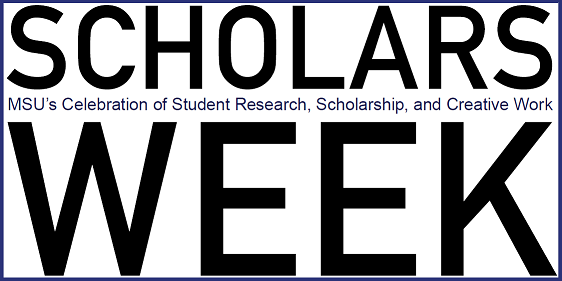
CHFA | Psychology Department Showcase: Completed Projects
Don’t You Know That They’re Toxic: Parasocial Attachments and Fictional Relationships
Academic Level at Time of Presentation
Senior
Major
Psychology
Minor
Chemistry and Biology
List all Project Mentors & Advisor(s)
Dr. Jana Hackathorn
Presentation Format
Poster Presentation
Abstract/Description
Problem or Major Purpose. Parasocial relationships are one-sided interactions individuals have with fictional characters or famous celebrities (Derrick et al., 2008). Parasocial relationships can be beneficial for exploration and development of one’s own romantic emotions, sexuality, or ideal self (Derrick et al., 2008; Erikson & Dal Cin, 2018). Conversely, there may be drawbacks such as unrealistic expectations and dysfunctional beliefs (Spiranec, 2018). For example, the young adult genre often contains harmful tropes that expose the audience to dysfunctional relationship behaviors such as portraying abuse as romantic, normalizing slut shaming, and fetishizing virginity (Spiranec, 2018). The current study examines the relationship between Parasocial attachment and acceptancy of dysfunctional relationship behavior, in fictional characters.
Procedure. Participants will complete an online survey that asks them to think of their favorite fictional character, and how much they identify with one of the members of that couple. Then, participants completed the Audience-Persona Interaction Scale (Auter, & Palmgreen, 1992) for their favorite character, the significant other, and the fictional couple as a whole to measure parasocial attachment. Participants also completed a Social Dysfunction Rating Scale (Margaret W. Linn et al, 1969) and the Relationship Assessment Scale (Hendrick, 1988) modified to rate the perceived quality of the fictional relationship. Finally, participants completed a measure of imagination needs (ipip.ori.org), the Empathy scale (Davis, 1980), to be examined as potential covariates.
Expected results. It is expected that there will be a positive correlation between parasocial attachment with one’s favorite character and attachment with the favorite character’s significant other and the couple as a whole. Additionally, that parasocial attachment will predict acceptance of dysfunctional behavior as well as higher satisfaction with the relationship.
Conclusions and implications. Parasocial identification, or attachment, with one’s favorite character and their relationships, can be fun and exciting. However, it can also be detrimental if that character is in a dysfunctional toxic relationship that is being normalized in the fictional work. The findings of this study can give more insight into how people become accepting of, or complacent in, dysfunctional or abusive relationships. This study could potentially add to our knowledge of not only parasocial relationships, but also romantic relationships in general.
Location
Waterfield Gallery
Start Date
November 2021
End Date
November 2021
Fall Scholars Week 2021 Event
Psychology: Completed Projects
Don’t You Know That They’re Toxic: Parasocial Attachments and Fictional Relationships
Waterfield Gallery
Problem or Major Purpose. Parasocial relationships are one-sided interactions individuals have with fictional characters or famous celebrities (Derrick et al., 2008). Parasocial relationships can be beneficial for exploration and development of one’s own romantic emotions, sexuality, or ideal self (Derrick et al., 2008; Erikson & Dal Cin, 2018). Conversely, there may be drawbacks such as unrealistic expectations and dysfunctional beliefs (Spiranec, 2018). For example, the young adult genre often contains harmful tropes that expose the audience to dysfunctional relationship behaviors such as portraying abuse as romantic, normalizing slut shaming, and fetishizing virginity (Spiranec, 2018). The current study examines the relationship between Parasocial attachment and acceptancy of dysfunctional relationship behavior, in fictional characters.
Procedure. Participants will complete an online survey that asks them to think of their favorite fictional character, and how much they identify with one of the members of that couple. Then, participants completed the Audience-Persona Interaction Scale (Auter, & Palmgreen, 1992) for their favorite character, the significant other, and the fictional couple as a whole to measure parasocial attachment. Participants also completed a Social Dysfunction Rating Scale (Margaret W. Linn et al, 1969) and the Relationship Assessment Scale (Hendrick, 1988) modified to rate the perceived quality of the fictional relationship. Finally, participants completed a measure of imagination needs (ipip.ori.org), the Empathy scale (Davis, 1980), to be examined as potential covariates.
Expected results. It is expected that there will be a positive correlation between parasocial attachment with one’s favorite character and attachment with the favorite character’s significant other and the couple as a whole. Additionally, that parasocial attachment will predict acceptance of dysfunctional behavior as well as higher satisfaction with the relationship.
Conclusions and implications. Parasocial identification, or attachment, with one’s favorite character and their relationships, can be fun and exciting. However, it can also be detrimental if that character is in a dysfunctional toxic relationship that is being normalized in the fictional work. The findings of this study can give more insight into how people become accepting of, or complacent in, dysfunctional or abusive relationships. This study could potentially add to our knowledge of not only parasocial relationships, but also romantic relationships in general.

